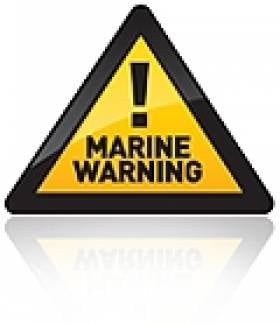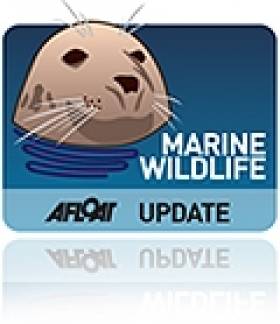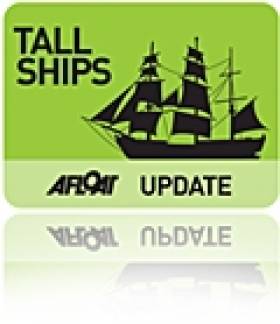Displaying items by tag: DTTAS
Marine Notice on Changes to Lifeboat Release Mechanisms
#NEWS UPDATE - A recent Marine Notice from the Department of Transport, Tourism and Sport (DTTAS) advises on the adoption of new international resolutions pertaining to SOLAS regulations and changes to the International Life-Saving Appliance (LSA) Code.
The changes are intended to establish new stricter safety standards for lifeboat release and retrieval systems, aimed at preventing accidents during lifeboat launching, and will require the assessment and possible replacement of a large number of lifeboat release hooks.
Both of these changes are expected to come into force from 1 January 2013 with a view to full compliance by July 2019.
The Maritime Safety Committee of the International Maritime Organisation has also approved new guidelines for the evaulation and replaceent of lifeboat release systems, in which the DTTAS will require fall preventer devises, or FPDs, to be fitted.
Complete details for shipowners, ship operations, shipmasters and seafarers are included in Marine Notice No 54 of 2011, a PDF of which is available to read and download HERE.
Marine Notice: AFS Convention Comes Into Force January 2012
#NEWS UPDATE - The latest Marine Notice from the Department of Transport, Tourism and Sport (DTTAS) gives notice that the International Convention on the Control of Harmful Ani-Fouling Systems on Ships - known as the AFS Convention - will come into force for Irish-flagged ships on 20 January 2012.
Anti-fouling systems refer to paints or coatings applied to the hulls of vessels to prevent living organisms from attaching to them.
Currently all Irish-flagged ships of 400 gross tonnage and over are required to hold an Anti-Fouling Certificate, issued under Regulation (EC) No 782/2003 of the European Parliament and of the Council.
The new regulations mean that any Irish-flagged ship which holds such a Certificate must replace it with an International Certificate, issued under the AFS Convention.
The new convention applies to three separate groups: any and all ships of 400 gross tonnage and over; all ships (including fishing vessels) of 24 metres or greater in length; and all other vessels.
Details of requirements for these groups are included in Marine Notice No 55 of 2011, a PDF of which is available to read and download HERE.
Marine Notice: Deployment of Waverider Buoys
The latest Marine Notice from the Department of Transport, Tourism and Sport (DTTAS) advises that two Waverider buoys are set to be deployed off the west coast from tomorrow 10 October.
The buoys will be operational for between 12 and 24 months at two locations, one 6km west of Achillbeg Island, Co Mayo and one 2km north northwest of Captain's Hill, Co Clare. Both have a drift radius of up to 100m.
All vessels in the areas above are requested to give the buoys a wide berth. They will be easily spotted by their spherical shape, bright yellow colour and flash pattern (FL 5, Yellow, every 20 seconds).
Full location co-ordinates and further details are included in Marine Notice No 48 of 2011, a PDF of which is available to read and download HERE.
Watch Out for Dolphins in Dublin Bay!
Racers in Dalkey and Killiney Bay have been enjoying the sight of three bottlenose dolphins who have taken up residence in the area.
The trio has attracted much attention in recent weeks due to their playful antics, but the Dublin Bay Sailing Club reminds sightseeing boat owners to be careful not to crowd them.
For guidelines on the correct procedures when encountering dolphins see the relevant DTTAS Marine Notice HERE.
Requirements for Recreational Craft at Tall Ships Races
The latest Marine Notice from the DTTAS includes important information for recreational craft expected to attend the Tall Ships Races in Waterford from 30 June to 3 July.
Race organisers and the Waterford harbour master have issued an approved water safety plan for the marshalling of spectator boats for the time the tall ships are in port and for the start of the race off Hook Head.
Skippers and crew must comply with all instructions and be aware of their obligations under existing maritime legislation (regarding avoidance of collisions, preventing reckless behaviour and ensuring correct safety equipment is on board).
Boat owners intending to visit should contact the harbour master for details on restricted areas and berthing spots via the Port of Waterford website or directly at 051 974 907.
Restrictions are also in place for passenger boats and ships. Only fully licenced vessels with plying limits listing Waterford as a point of departure are allowed to operate during the event. Temporary changes in plying limits can be made via the Marine Survey Office before 15 June.
Further details are available on Marine Notice No 28 of 2011 which is available to read or download HERE.
Mariners Advised on West Coast Seismic Survey
The Department of Transport's latest marine notice advises seafarers off the west coast to keep a lookout while a 3D seismic survey is conducted over the next three weeks.
The vessel M/V Ramform Vanguard that will carry out the work will be towing 10 streamers 6km long and will have a minimum turning radius of 3km.
Due to this restriction in manoeuvrability, all boats in the area are requested to give the vessel a wide berth.
The vessel's planned locations are listed in the PDF of Marine Notice No 24 of 2011, which is available to read or download HERE.
E-mail Changes for Department of Transport
The Department of Transport's latest marine notice reminds all bodies and individuals who have dealings with the department that it has now been renamed as the Department of Transport, Tourism and Sport.
As a result of this, all departmental e-mail addressed have been changed, and will now end with dttas.ie. E-mail spam filters may need to be updated to reflect the new change to continue sending or receiving e-mails from the department.
A PDF of Marine Notice No 20 of 2011 is available to read/download HERE.






























































